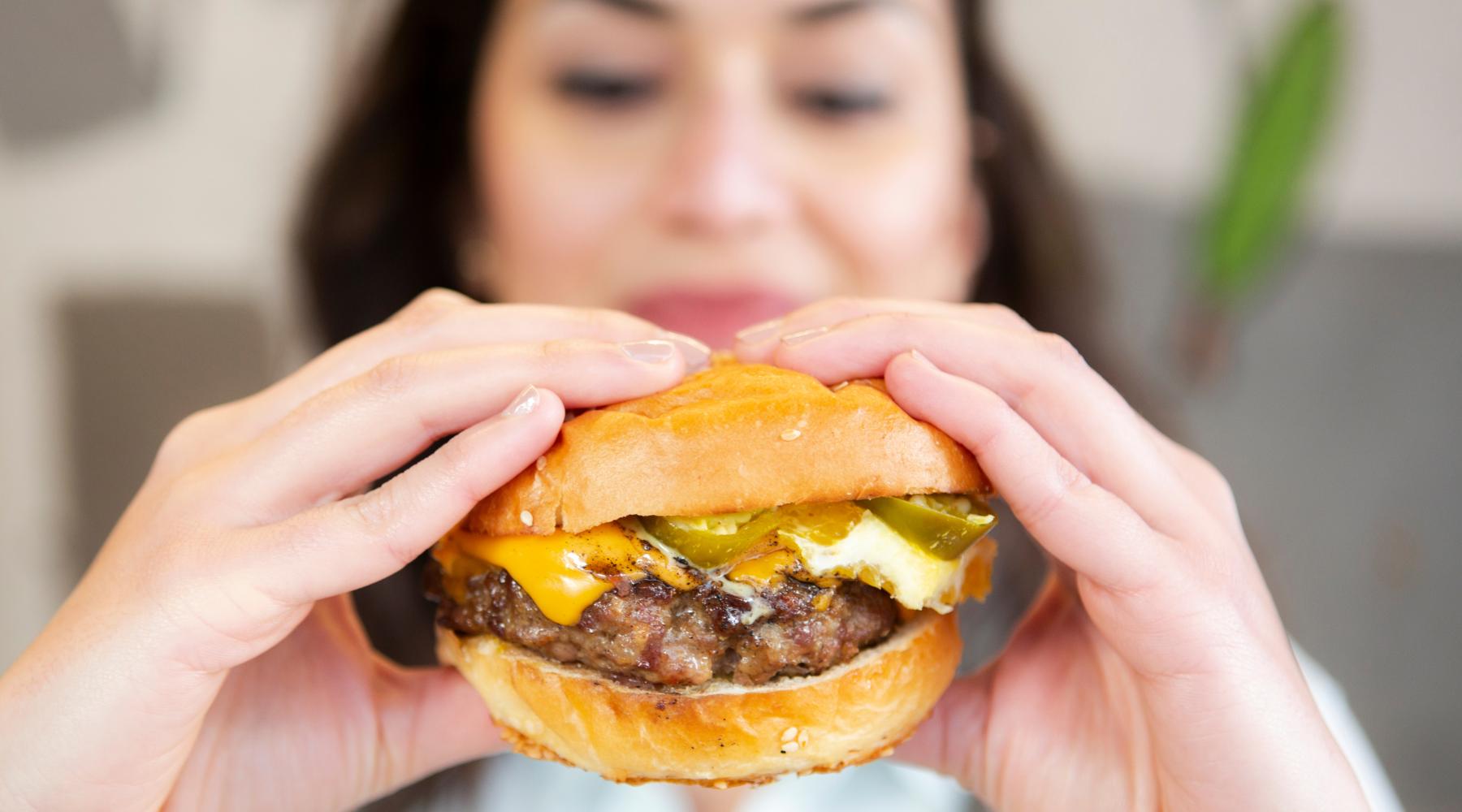Are you looking to shake up your diet and achieve optimal results? Carb cycling might be the fresh approach you need. This method not only promotes fat loss but also helps maintain muscle mass. In this article, we'll explore carb cycling, provide a structured 7-day plan, and cover some essential tips and tricks for success. So, let’s dive in!
Key Takeaways
What Is Carb Cycling?
-
Alternating between high-carb and low-carb days to fuel workouts, enhance fat loss, and support muscle growth.
Benefits of Carb Cycling:
-
Supports fat loss without muscle loss.
-
Enhances workout performance and recovery.
-
Offers flexibility and reduces feelings of deprivation.
How to Structure Your 7-Day Plan:
-
High-carb days align with intense workouts; low-carb days focus on rest or light activity.
-
Include high-carb foods like sweet potatoes and oats on workout days, and lean proteins and veggies on low-carb days.

Understanding Carb Cycling
Carb cycling is a dietary strategy where you alternate between high-carb and low-carb days. It’s a flexible way to manage carbohydrate intake while still enjoying the benefits of those high-carb foods. By alternating these days, you can fuel your workouts effectively and enhance fat loss.
The Science Behind Carb Cycling
At its core, carb cycling leverages the body's need for carbohydrates, especially when you're active. On high-carb days, your body replenishes glycogen stores, which are vital for energy during vigorous exercise. On low-carb days, you encourage your body to burn fat for fuel, helping with weight loss and body composition goals.
Research indicates that cycling your carb intake may increase metabolic flexibility, allowing your body to switch between burning fats and carbohydrates more efficiently. This can lead to improved energy levels and better workout performance. Furthermore, the hormonal response to carb intake plays a crucial role; higher-carb days can stimulate insulin release, which aids in muscle recovery and growth, while lower-carb days promote fat oxidation and can help regulate blood sugar levels.
Benefits of Carb Cycling
One of the main benefits of carb cycling is its versatility. Unlike restrictive diets, carb cycling provides room for flexibility in your meal planning. This approach not only aids in fat loss but also supports muscle gain, ensuring you look and feel your best.
Additionally, carb cycling can help reduce the feelings of deprivation commonly associated with dieting. On high-carb days, you can indulge in your favorite foods, making you less likely to binge on those treats later. This psychological aspect is significant, as it helps maintain a healthy relationship with food, allowing for enjoyment without guilt. Moreover, the structure of carb cycling can make it easier to socialize, as you can plan high-carb days around events or gatherings where food plays a central role.
Lastly, it helps with insulin sensitivity and may improve overall metabolic health, making it a holistic approach to dieting. The cyclical nature of carb intake encourages the body to adapt to varying levels of carbohydrates, which can enhance your metabolic rate over time. This adaptability not only supports weight management but also contributes to long-term health benefits, such as reduced risk of metabolic syndrome and improved cardiovascular health.

Setting Up Your 7-Day Carb Cycling Plan
Getting started with carb cycling requires a bit of preparation and understanding of your body’s needs. Setting up a 7-day plan would help you structure your meals effectively and ensure you’re getting the nutrients you need.
Identifying Your High-Carb and Low-Carb Days
Typically, high-carb days fall on your more intense workout days, while low-carb days are scheduled for rest or low-intensity days. Start by determining your weekly workout routine. For example, if you lift weights three times a week and do cardio on alternate days, your high-carb days might look like this:
-
High-Carb Day: Weightlifting Days
-
Low-Carb Day: Rest Days or Light Cardio
Most carb cycling plans often involve two high-carb days and five low-carb days, but you can adjust this according to your personal preferences and energy needs. It’s also important to listen to your body; if you feel fatigued or notice a drop in performance, consider adjusting your carb intake to better align with your energy expenditure. Remember, the goal is to fuel your workouts while optimizing fat loss.
Planning Your Meals
Meal planning is crucial for a successful carb cycling plan. Start by mapping out what you will eat each day, ensuring you have a good mix of nutrients, particularly protein, and healthy fats. On high-carb days, focus on sources like sweet potatoes, oats, and whole-grain pasta. On low-carb days, lean towards non-starchy vegetables, meats, and healthy fats.
For example, you could plan a high-carb breakfast of oatmeal topped with fruits on workout days, while keeping a breakfast of eggs and avocado on low-carb days. Having a meal prep strategy can prevent impulsive choices and help you stay on track. Additionally, consider incorporating snacks that align with your carb cycling goals. For high-carb days, snacks like rice cakes with nut butter or yogurt with granola can provide quick energy boosts, while low-carb days might benefit from options like cheese sticks or celery with hummus.
Hydration plays a vital role in your overall performance and well-being during this process. Make sure to drink plenty of water throughout the day, and consider adding electrolytes, especially on high-carb days when your body may require additional support for recovery. Keeping a food diary can also be beneficial; it allows you to track your meals, energy levels, and any changes in your body, helping you fine-tune your carb cycling plan as you progress.

Foods to Include in Your Carb Cycling Plan
To successfully navigate carb cycling, having a repertoire of foods you can rely on will make your life easier and more enjoyable. Understanding which foods fit into your high-carb and low-carb categories is essential for success. This approach not only helps in managing your weight but also enhances your overall energy levels and workout performance. By strategically planning your meals, you can optimize your body’s ability to burn fat while still enjoying the foods you love.
Best High-Carb Foods
On high-carb days, you want to focus on complex carbohydrates that provide sustained energy. Here are some great options:
-
Brown rice
-
Quinoa
-
Whole-grain bread
-
Fruits (especially bananas, berries, and apples)
-
Starchy vegetables (like sweet potatoes and squash)
-
Pasta (preferably whole grain)
These foods will help replenish glycogen stores effectively, ensuring that you are fueled up for your workouts and daily activities. Additionally, incorporating a variety of these foods can help prevent meal fatigue, making your high-carb days something to look forward to. For instance, you can create a delicious quinoa salad with fresh vegetables and a light vinaigrette, or enjoy a hearty bowl of whole-grain pasta tossed with your favorite sauce and protein. The key is to mix and match to keep your meals exciting and satisfying.
Best Low-Carb Foods
On low-carb days, prioritize foods that are high in protein and healthy fats while minimizing carbohydrates. Consider adding the following to your meals:
-
Lean meats (chicken, turkey, lean beef)
-
Fish (especially fatty types like salmon)
-
Eggs
-
Cheese and full-fat dairy (in moderation)
-
Non-starchy vegetables (broccoli, spinach, zucchini)
-
Nuts and seeds
Including these options will keep you satiated and help maintain muscle during your low-carb days. These foods are not only nutritious but also versatile, allowing you to prepare a variety of dishes. For example, a spinach and feta omelet can serve as a fulfilling breakfast, while a grilled salmon with a side of roasted Brussels sprouts makes for a satisfying dinner. You can also whip up a refreshing salad topped with nuts and a protein of your choice, ensuring that you enjoy your meals while sticking to your carb cycling plan.
Sample 7-Day Carb Cycling Plan
| Day | Type | Meal Focus | Example Foods |
|---|---|---|---|
| Monday | High-Carb | Fuel intense workouts | Oats, sweet potatoes, bananas, lean chicken |
| Tuesday | Low-Carb | Recovery or light activity | Eggs, salmon, leafy greens, avocado |
| Wednesday | High-Carb | Strength training | Brown rice, quinoa, fruits, grilled turkey |
| Thursday | Low-Carb | Cardio or rest day | Zucchini noodles, baked salmon, nuts |
| Friday | High-Carb | Weightlifting or intense exercise | Whole-grain pasta, berries, chicken breast |
| Saturday | Low-Carb | Rest or light stretching | Omelette, roasted veggies, seeds |
| Sunday | Low-Carb | Active recovery (e.g., yoga or walking) | Grilled fish, cauliflower rice, almond butter |

Maintaining Your Carb Cycling Plan
Sticking to a carb cycling plan can be challenging, but with the right tips, it becomes much easier. The key is consistency coupled with a little flexibility. Here’s how to maintain your momentum.
Tips for Staying on Track
One of the best things you can do is keep a food diary or use an app to track your meals. Knowing what you’ve consumed helps reinforce your commitment to the plan. It can also highlight any potential changes you need to make, depending on your progress and energy levels.
Additionally, embrace meal prep. Spend a bit of time each week preparing your meals or snacks. This will eliminate time spent deciding what to eat each day and keep you from making poor choices in a hurry.
Adjusting Your Plan for Long-Term Success
As you become more accustomed to carb cycling, don’t be afraid to tweak your plan based on your progress. Whether it’s adjusting the amount of carbohydrates, changing your high-carb days, or finding new recipes, adapting is key to long-term success.
Remember, it's perfectly fine to assess how you feel during this journey. If you're experiencing fatigue or not seeing the results you desire, make adjustments and consult a nutritionist if you need professional guidance.

Potential Challenges and Solutions
Every journey has its bumps in the road. Recognizing potential challenges will help you navigate them effectively and maintain your progress.
Dealing with Hunger on Low-Carb Days
Feeling hungry on low-carb days is common, but it can be managed. First, ensure that you're eating enough protein and fiber-rich vegetables, as these keep you fuller for longer. Snacking on nuts or having high-protein yogurt can also help curb those cravings. Staying hydrated is essential, as sometimes thirst is mistaken for hunger.
Overcoming Plateaus in Weight Loss
Plateaus can be discouraging, but they are a part of the weight loss journey. If you find your progress stalling, try adjusting your high-carb and low-carb ratios. You could also mix up your workout routine to stimulate changes in the body. Additionally, focus on non-scale victories, like improved strength or increased energy, to keep you motivated.
A 7-day carb cycling plan can be a fantastic way to transform your diet and achieve your fitness goals. By understanding the intricacies of carb cycling, setting up your plan, and being mindful of food choices, you can pave the way for long-term success. Now, get out there and start your carb cycling journey!
FAQs
-
What is carb cycling, and how does it work? Carb cycling alternates between high-carb and low-carb days to optimize fat loss, muscle growth, and energy. High-carb days replenish glycogen stores, while low-carb days promote fat burning.
-
Can carb cycling help with weight loss? Yes, carb cycling aids weight loss by enhancing metabolic flexibility, improving insulin sensitivity, and encouraging fat-burning on low-carb days while fueling workouts on high-carb days.
-
What are the best foods for carb cycling? High-carb days include whole grains, sweet potatoes, and fruits, while low-carb days focus on lean proteins, healthy fats, and non-starchy vegetables like spinach and broccoli.
-
How do I start a 7-day carb cycling plan? Begin by identifying workout and rest days. Align high-carb days with intense workouts and low-carb days with rest or light activity. Plan meals with nutrient-rich foods to suit each day’s goals.
Take Your Fitness Journey Further with 3DActive
Ready to elevate your health and fitness routine beyond a 7-day carb cycling plan? Discover the 3DActive official store, where we offer a curated selection of health and wellness products designed to complement your active lifestyle. From advanced step monitors to help track your progress to personal alarm devices for safety and home workout essentials for those high-carb day energy bursts, we have everything you need to support your journey. Shop Now and take the first step towards a more active and secure lifestyle with 3DActive.





